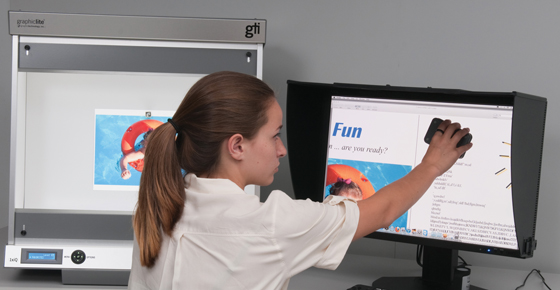June 23, 2020
Why Soft Proofing is So Important Right Now
Today, a soft proofing workflow can be more valuable than ever before. Why now? Because, in the midst of a global pandemic, when many businesses – including those that are dependent on color accuracy – are going remote, soft proofing provides a roadmap for maintaining a fast, affordable, and consistent digital workflow that enables brand owners, design agencies, and printers to remotely review and sign off on a job’s color quality and content.
By embracing a soft proofing workflow, color work can be performed remotely and confidently. A soft proofing workflow means there is no longer a need to travel to the printers for press checks, saving time and money while adhering to Covid-19 safety protocols.
Early data suggests that remote work – whereby professionals perform their jobs from home or at a location outside of their regular work setting – is becoming more common and may continue into the foreseeable future. One survey found those who were employed before the crisis and are working from home rose to around 50 percent from 15 percent. And it appears that this trend will not reverse course. Another survey found 74 percent of companies plan to make part of their staff remote permanently.
What is Soft Proofing?
Soft proofing allows the user to view an accurate representation of what a final print will look like on their monitor. This visual representation (soft proof) replaces a traditional hard copy proof and serves as a contract between supplier and buyer. A contract soft proofing system will enhance a digital workflow by providing proofs that are accurate, repeatable, and supported by industry standards. A GTI iQ viewing system combined with a soft proofing workflow, such as Remote Director, will remove the manual processes and guess work from soft proofing to establish an automated streamlined workflow that provides accurate and repeatable results. The system enables superb lighting uniformity by meeting ISO 3664:2009 D50 light quality for superior color rendition.
The Key Components of a Soft Proofing Workflow
The software allows the user to share color accurate proofs and to collaborate online in real time. A contract soft proofing system also needs to give users the ability to calibrate their monitors to any color standard. These settings need to synchronize and be verified across all users who are responsible for a job’s color accuracy.

A viewing system enables the precise visual comparison between a monitor and a hard copy proof. A GTI iQ viewing system will take the question out of luminance match and replace it with repeatable accuracy. iQ viewing systems utilize a specially designed light sensor that captures the brightness of the monitor and automatically transfers that data to the viewing station where it is used to automatically calibrate the viewing station’s brightness to match the monitors. GTI offers soft proofing capability on viewers ranging from desktop models to large format viewing booths.
The monitor acts like an output device in a soft proofing workflow. To ensure accuracy the monitor should be a high quality, color calibrated monitor such as those offered by BenQ, Eizo, and NEC.
The Benefits
All stakeholders in the supply chain will benefit from soft proofing. They will experience improved efficiency, lower supply cost, better and faster collaboration, quicker turnaround times, and lower their environmental impact. During a global pandemic soft proofing adds the additional benefit of removing the need to travel for press checks and enabling design teams, brand owners, and printers to easily collaborate while working remotely.






